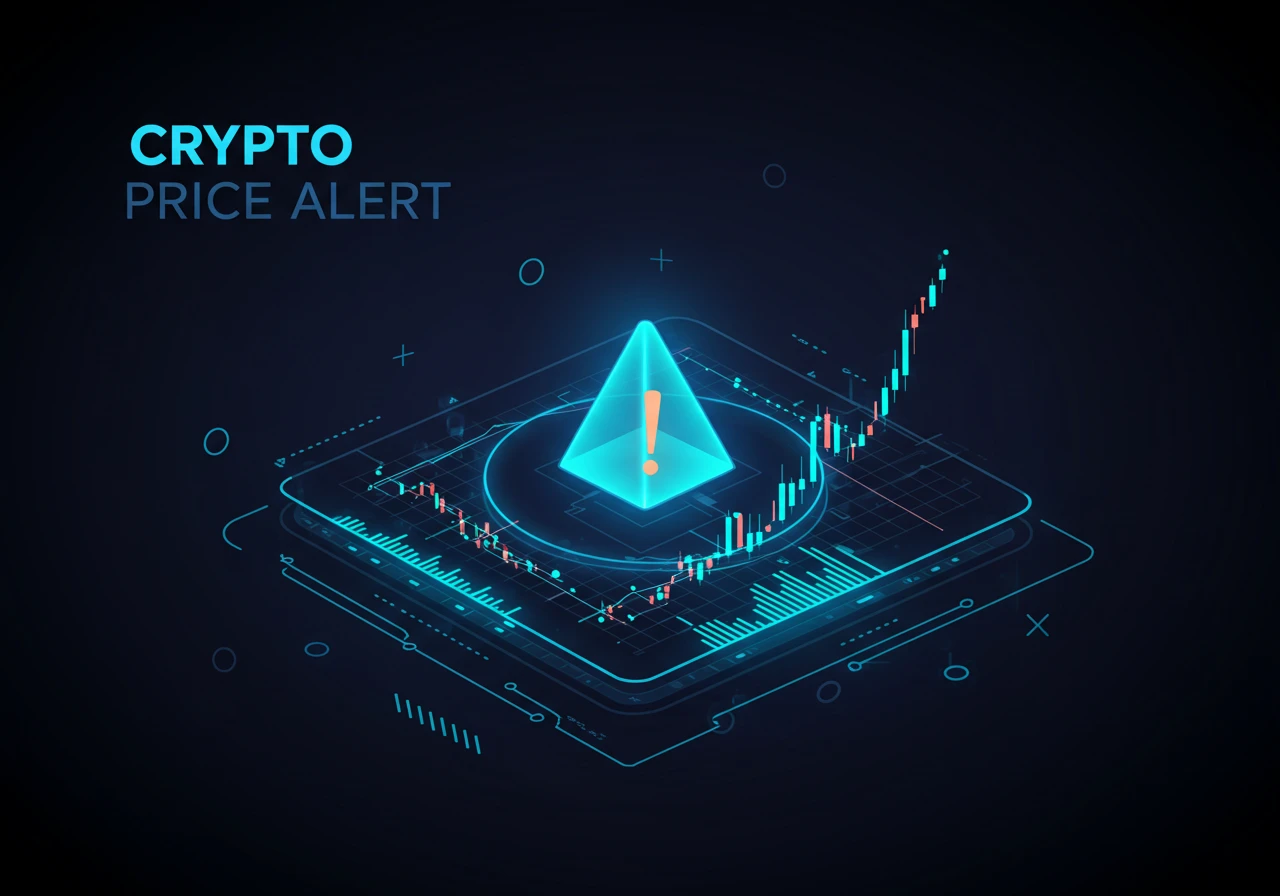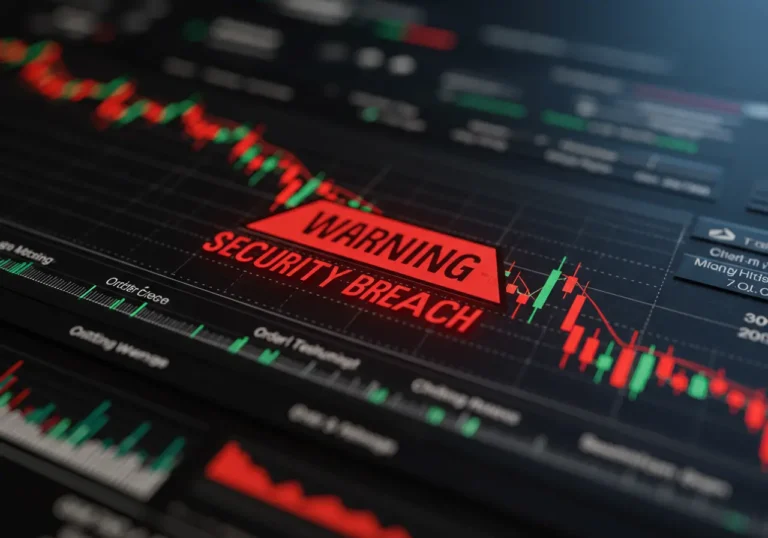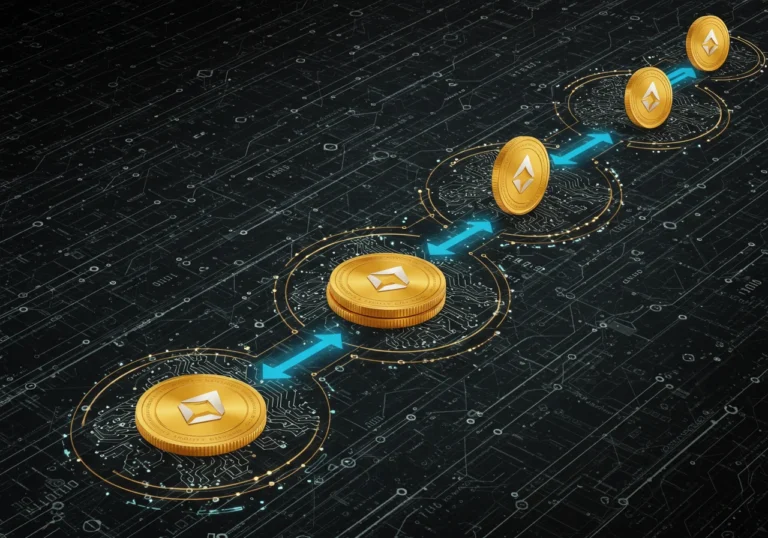How to Use a Crypto Price Alert to Manage Risk
Crypto price alert are small signals. They tell you when a price moves in a way you care about. Using them well turns surprise into a plan. In this article I’ll show you how to use alerts as part of a steady risk management strategy for crypto, how to set them up, and how to avoid common traps.
What is a crypto price alert and why it matters
A crypto price alert is a notification you get when a coin reaches a price you set. It can be a push message on your phone, an email, an SMS, or a webhook to an automated tool. Think of it like a smoke alarm for your money: it tells you there is a change so you can respond.
A simple alert is useful for three reasons:
- It reduces emotional stress by giving you time to think.
- It helps you act quickly when markets move fast.
- It supports simple rules — for example, sell if the price falls 20%.
People often think alerts are for day traders only. That is not true. Alerts are useful for anyone who owns crypto. They are part of a wider cryptocurrency price monitoring tool kit that keeps you informed.
How alerts fit into a risk management strategy for crypto
An alert alone does not manage risk. It is a tool inside a plan. A good risk management strategy for crypto has clear rules, and alerts help you follow those rules.
A basic plan looks like this:
- Decide how much you can afford to lose on a trade or position.
- Choose simple rules for when to reduce or exit the position.
- Set price alerts tied to those rules.
- Test the rules with small amounts or paper trading.
- Review and adapt the rules occasionally.
For example, if you buy a token at $100 and you decide you will exit if it falls 25%, set a crypto price alert at $75. Combine that with another alert for a 50% gain so you can secure profit. The alerts keep you true to your plan.
Types of alerts and when to use them
Not all alerts are the same. Use different kinds depending on your needs.
- Fixed price alerts: Trigger when price hits a set number (e.g., $75). Good for clear entry/exit levels.
- Percentage change alerts: Trigger when price moves up/down by X% from a reference point. Good for volatility.
- Volume alerts: Trigger when trading volume spikes. Spikes often preface big moves.
- Volatility alerts: Trigger when price swings widen. Useful to avoid chop.
- Trailing alerts: Follow price upward and alert if it falls by a percentage from its local high. Great for locking gains.
- Cross-asset alerts: Alert when one asset moves relative to another (e.g., BTC drops while ETH rises). Useful for portfolio rebalancing.
Each type helps a different goal. For daily monitoring, combine a few.
Where to get crypto price alerts
You have many choices. Pick what fits your comfort level.
- Exchange alerts: Most exchanges offer push/email alerts for prices. They are easy to set up and quick.
- Portfolio apps and price trackers: Apps like CoinMarketCap, CoinGecko, and mobile portfolio apps provide customizable alerts.
- Dedicated alert services: Some tools focus on real-time alerts and add features like webhooks and advanced filters.
- Trading platforms: Trading platforms can send alerts and link to automated orders.
- Build your own: If you are technical, you can use APIs and a small script to trigger alerts exactly how you want.
If you plan to automate trades from alerts, use a trusted trading platform and secure API keys. Do not give withdrawal permissions to automation.
Setting up price alerts — practical steps
Here is a simple walk-through to set a useful alert system.
- Decide your rules first. Rules come from risk sizing. Example: limit loss to 10% of portfolio value on a single coin.
- Choose the alert type. For losses, set a fixed price or percentage drop alert. For gains, use a trailing alert.
- Select the sources. Use one reliable exchange or tracker for price data. Multiple sources can reduce false triggers.
- Set notification methods. For fast markets, use push notifications. For less urgent matters, email is fine.
- Add a confirmation step. Don’t auto-sell on the first alert unless your rules demand it. Use the alert as a prompt to check.
- Test with small positions. Try the system on a small trade before trusting it with big money.
- Log alerts and actions. Keep a short record: alert time, action taken, outcome. This helps you improve.
Example setups for different goals
Beginner long-term holder:
- Alert when price falls 20% from buy price (re-check fundamentals).
- Alert when price rises 50% (consider taking partial profits).
Active trader:
- Percentage alerts every 2% move within day.
- Trailing alert of 3% to capture upside while protecting profit.
Portfolio manager:
- Alerts for total portfolio drop of 10% to trigger rebalancing.
- Alerts when BTC dominance changes by 4% for strategic shifts.
Tailor numbers to your risk tolerance and the coin’s volatility.
Real-time alerts for managing crypto risk — tips to reduce noise
Markets can beep all day. Too many alerts cause stress and bad decisions. Use these tips for real-time alerts for managing crypto risk without overwhelm.
- Set meaningful thresholds. Avoid 1% alerts on volatile coins unless you trade them actively.
- Use volume or volatility filters. Ignore small moves that happen on tiny volume.
- Consolidate alerts. One alert for an event is better than repeated identical alerts.
- Use time filters. Limit active alerts to market hours if you can only trade during those times.
- Whitelist coins. Track only the coins you own or plan to buy.
These habits cut unnecessary noise and keep alerts useful.
Automated risk management for crypto trading — connecting alerts to actions
You can link alerts to automation, but do so carefully. This is automated risk management for crypto trading.
Common automations:
- Webhooks to trading bots: Alerts can trigger bots to place limit or stop orders.
- API calls to exchanges: Trigger partial sells on alerts. Never allow automatic full withdrawals.
- IFTTT/Zapier workflows: Send notifications to multiple channels or log events to a spreadsheet.
Safety rules for automation:
- Use APIs with limited permissions (trading only, no withdrawals).
- Start with partial automation (e.g., reduce position by 20%) rather than full liquidation.
- Monitor logs and keep an emergency kill switch.
Automation speeds action. It also increases risk if misconfigured.
Combining alerts with other risk tools
Price alerts work best with other protections.
- Stop-loss orders: Place stop orders near your alert levels. Alerts give you time to adjust.
- Position sizing rules: Use alerts to remind you of max allocation per coin.
- Diversification checks: Alerts for correlation changes help maintain balance.
- On-chain or liquidity alerts: If liquidity dries up, a sell may be harder — alert for that too.
Think of alerts as the nervous system of your risk plan.
Psychological benefits — stay calm and objective
Alerts are emotional first-aid. They help you avoid rash choices.
When you get an alert, you have time to breathe, check facts, and follow the plan. Over time, alerts reduce stress and improve decision quality. They teach patience.
Common mistakes and how to avoid them
- Too many alerts: Trim them to what matters.
- Relying on one source: Use reliable data and consider redundancy.
- Auto-trading without testing: Practice first.
- Ignoring liquidity and slippage: An alert to sell is not a guarantee you can sell at that exact price. Consider spreads and fees.
- Using alerts without a plan: The alert must link to a clear action.
Avoid these and your alerts will serve you well.
Conclusion — small rules, steady hands
A crypto price alert is a humble tool with outsize benefit. It turns sudden surprises into manageable events. Use alerts to back up a simple risk management strategy for crypto: set clear rules, choose sensible alerts, test them, and combine alerts with stops and position sizing. Over time you will feel more control and less stress.
Start small. Use one or two meaningful alerts. Practice the habit of checking, not panicking. With simple systems, your decisions get calmer and your outcomes improve.
Main points
- Use a crypto price alert to know when prices hit levels tied to your plan.
- Fit alerts into a broader risk management strategy for crypto with position sizing and stop-losses.
- Choose alert types: fixed price, percentage, trailing, volume, and volatility.
- Prefer push notifications for urgent alerts; email for less urgent ones.
- Avoid alert fatigue by setting meaningful thresholds and filters.
- Consider limited automation but test carefully and never grant withdrawal access.
- Combine alerts with liquidity and volume checks to avoid false expectations.
- Keep a simple log of alerts and actions to improve your rules over time.
FAQ
Q: How often should I check alerts?
A: Check them when they arrive. For non-urgent alerts, review daily or at set hours. Don’t watch screens constantly; use alerts to reduce need to stare at charts.
Q: Are mobile push alerts better than email?
A: Push alerts are faster. Email is fine for slower decisions. Use both if you want redundancy.
Q: Can alerts guarantee I will sell at a certain price?
A: No. Alerts notify you. Orders and market conditions determine execution. Use limit or stop orders if you need guaranteed actions, but know they can fail in extreme volatility.
Q: Should I automate sell orders from alerts?
A: Automate cautiously. Start with partial sells and use APIs with limited permissions. Test extensively.
Q: Do alerts work for small-cap tokens?
A: They can, but small-cap tokens may have low liquidity and high spreads. An alert to sell may not result in a good price. Always check liquidity before heavy reliance.

Hello, I’m Edmilson Dias, founder of CoinBringer. I created this platform to guide people through the fast-moving world of cryptocurrency with clarity and safety. With years of research in blockchain and digital security, my goal is to translate complex topics into practical knowledge, offering reliable tutorials, safety insights, and guidance for both newcomers and experienced users.
Discover more from CoinBringer
Subscribe to get the latest posts sent to your email.







